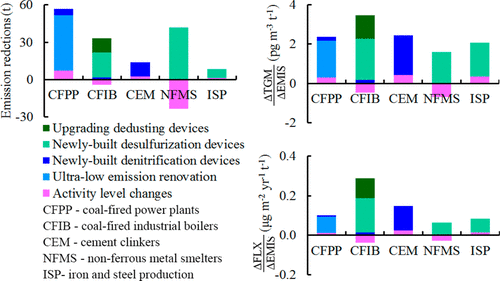当前位置:
X-MOL 学术
›
Environ. Sci. Technol.
›
论文详情
Our official English website, www.x-mol.net, welcomes your
feedback! (Note: you will need to create a separate account there.)
Measure-Specific Effectiveness of Air Pollution Control on China’s Atmospheric Mercury Concentration and Deposition during 2013–2017
Environmental Science & Technology ( IF 10.8 ) Pub Date : 2019-07-10 , DOI: 10.1021/acs.est.9b02428 Kaiyun Liu 1 , Qingru Wu 1 , Long Wang 2 , Shuxiao Wang 1, 3 , Tonghao Liu 4 , Dian Ding 1 , Yi Tang 1 , Guoliang Li 1 , Hezhong Tian 5 , Lei Duan 1, 3 , Xun Wang 6 , Xuewu Fu 6 , Xinbin Feng 6 , Jiming Hao 1, 3
Environmental Science & Technology ( IF 10.8 ) Pub Date : 2019-07-10 , DOI: 10.1021/acs.est.9b02428 Kaiyun Liu 1 , Qingru Wu 1 , Long Wang 2 , Shuxiao Wang 1, 3 , Tonghao Liu 4 , Dian Ding 1 , Yi Tang 1 , Guoliang Li 1 , Hezhong Tian 5 , Lei Duan 1, 3 , Xun Wang 6 , Xuewu Fu 6 , Xinbin Feng 6 , Jiming Hao 1, 3
Affiliation

|
China took aggressive air pollution control measures from 2013 to 2017, leading to the mitigation of atmospheric mercury pollution as a cobenefit. This study is the first to systematically evaluate the effect of five major air pollution control measures in reducing mercury emissions, the total gaseous mercury (TGM) concentration and mercury deposition flux (FLX) for unit emissions reduction. From 2013 to 2017, China’s mercury emissions decreased from 571 to 444 tons, resulting in a 0.29 ng m–3 decrease in the TGM concentration, on average, and in a 17 μg m–2 yr–1 decrease in FLX. Ultralow emission renovations of coal-fired power plants are identified as the most effective emission abatement measure. As a result of this successful measure, coal-fired power plants are no longer the main mercury emitters. In 2017, the cement clinker sector became the largest emitter due to the use of less effective mercury removal measures. However, in terms of the mitigated TGM concentration and FLX levels per unit emission abatement, newly built wet flue gas desulfurization (WFGD) systems in coal-fired industrial boilers have become particularly effective in decreasing FLX levels. Therefore, to effectively reduce atmospheric mercury pollution in China, prioritizing mercury emissions control of cement clinkers and coal-fired industrial boilers is recommended.
更新日期:2019-07-10















































 京公网安备 11010802027423号
京公网安备 11010802027423号